Content warning: sexual violence
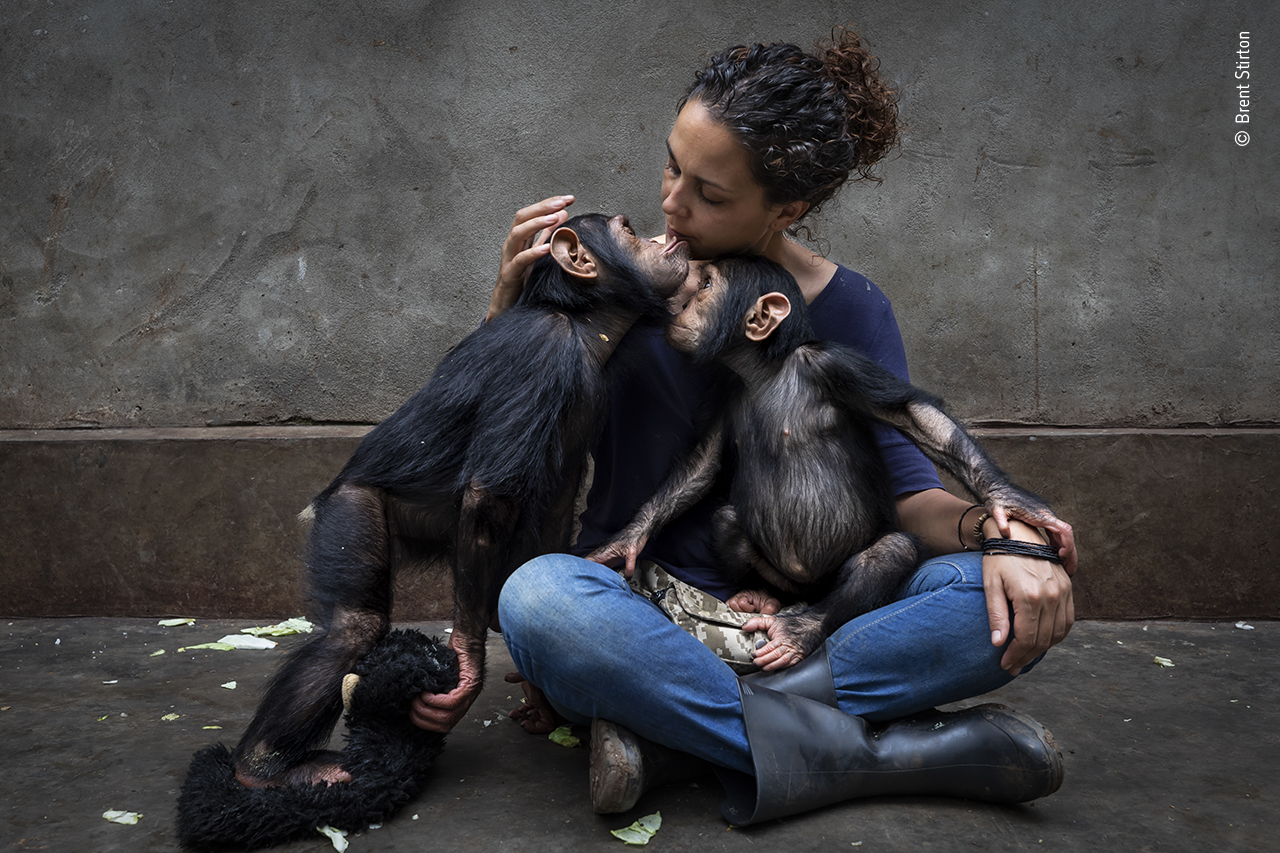
The Healing Touch © Brent Stirton
Brent Stirton's The Healing Touch shows the powerful impact individuals can have on wildlife.
The image, taken from his portfolio Community Care, won the Photojournalist Story Award in the fifty-seventh Wildlife Photographer of the Year competition. His images document the efforts of the Lwiro Chimpanzee rescue center and sanctuary, which rehabilitate orphaned chimpanzees.
Brent has been capturing the relationship between humans and the environment since 2007. His photographic essays often look at the impacts of the illegal wildlife trade. In The Healing Touch, one of two women in charge of the sanctuary, Itsaso Velez Del Burgo, sits with a newly rescued chimp as she begins the slow process of introducing it to the others.
The Lwiro Chimpanzee Sanctuary is in the Eastern Democratic Republic of Congo. Run by volunteers, the sanctuary is a female-led and community driven organisation which aims to repair damage done to the wild chimpanzee population caused by the bushmeat trade.
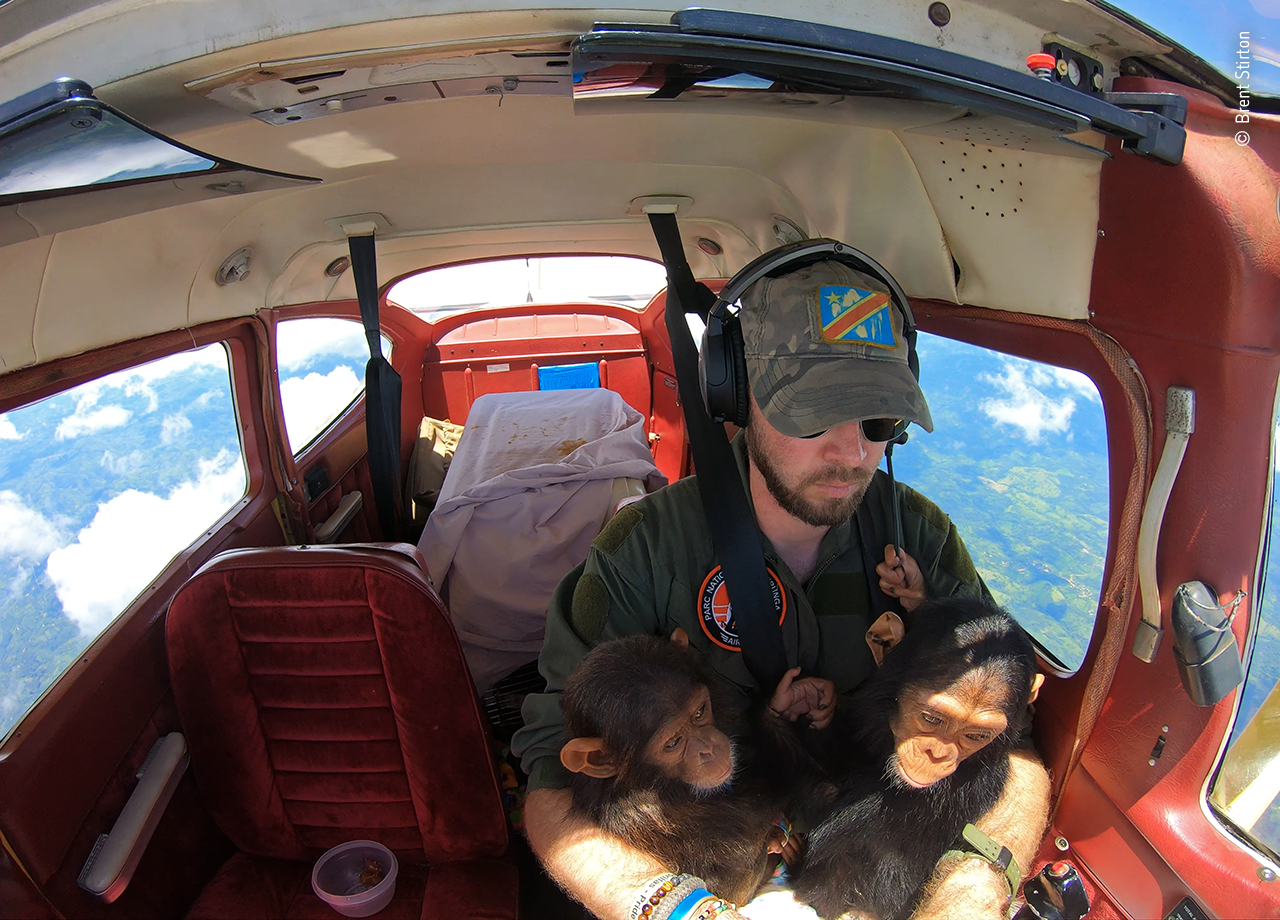
Image © Brent Stirton. Virunga National Park pilot Anthony flies two orphan chimpanzees to safety at the rehabilitation centre. The babies were rescued from traffickers following a tip-off from locals.
Chimps are killed by hunters for food, and while this is often legal, the demand for meat can decimate entire populations. Limited awareness of the issues teamed with poor enforcement of laws around bushmeat make the problem worse.
Chimpanzees can live up to 35 years in the wild and females only give birth every five years so even low levels of hunting have a big impact. Add in deforestation and chimpanzee numbers are in crisis – within three decades chimpanzees could be extinct in the wild.
Orphaned baby chimps are unlikely to survive without human intervention as they need specialist care including formula milk and regular, balanced meals. The chimps that come to Lwiro are rescued from across the continent and the sanctuary's remote location means some arrive by plane.
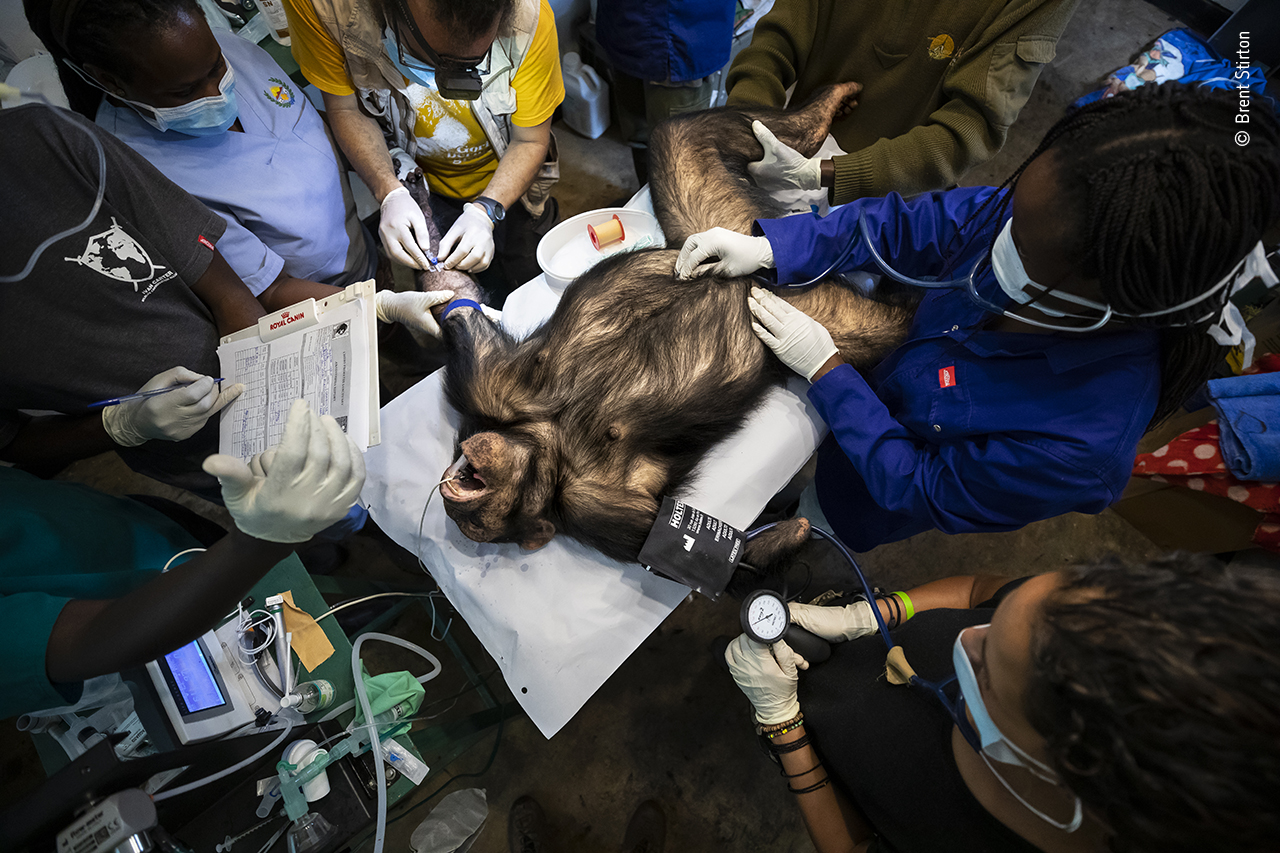
Image © Brent Stirton. Vets perform a health check on a rescued chimpanzee.
Once they arrive at the sanctuary, the young chimps are given one-on-one care to help them recover from the trauma they have experienced. The chimpanzees will have psychological scars as well as physical injuries. Often, they will have seen the adults in their family group killed for bushmeat. Many are starving on arrival.
These traumatised survivors are the lucky ones, just one in ten chimps are rescued. Many orphaned chimpanzees die from wounds or during transportation, or they are sold as pets. There are over 100 chimps living at the sanctuary and all were orphaned when their mothers were killed for bushmeat.
Take Mubaki, a chimp whose name means suffering in Swahili, who nearly died due to mistreatment at the hands of poachers. His mother was killed and he was earmarked to be sold into the pet trade before being rescued.
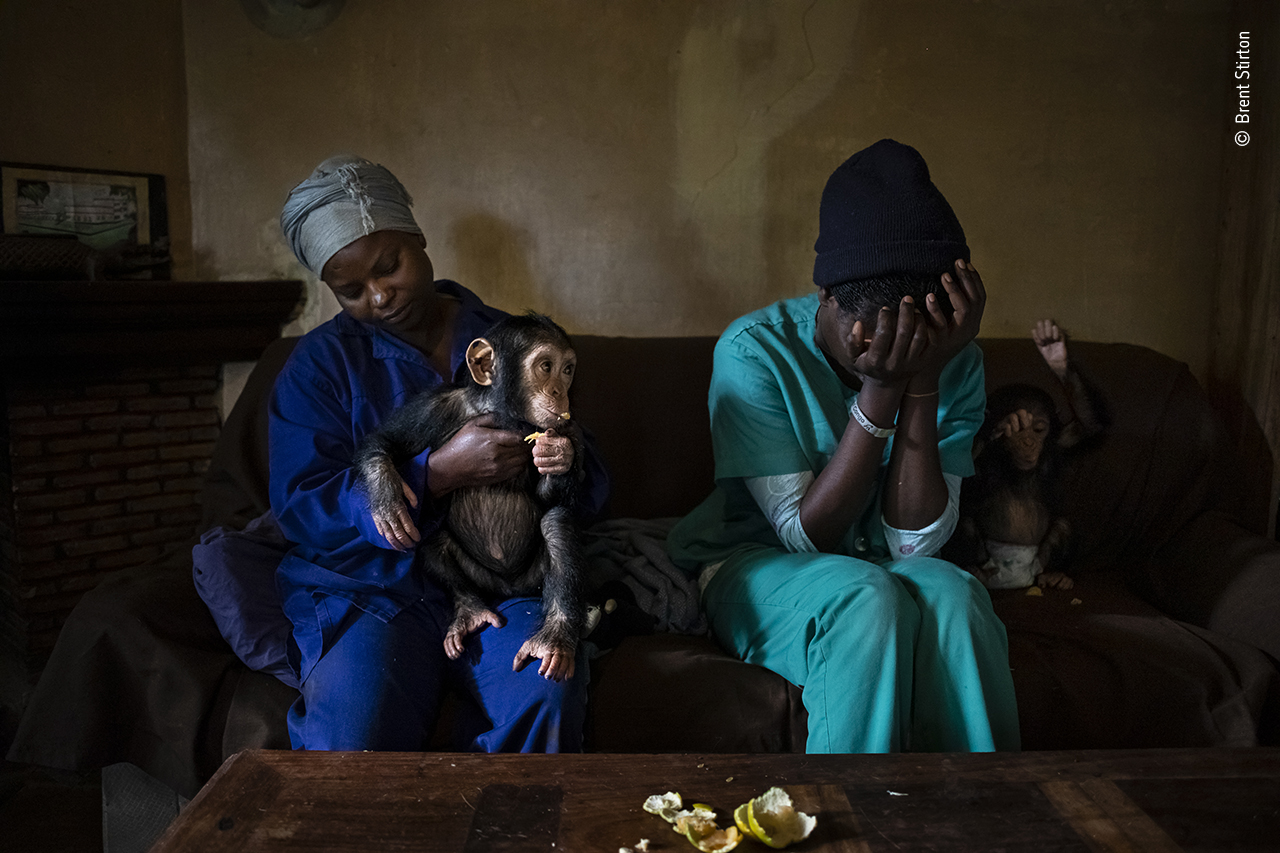
Image © Brent Stirton. Lina, a vet, dressed in green, and Florence, a caregiver, are exhausted after many hours of looking after energetic young chimpanzees.
.png)
For the ever-curious...
...set up your monthly subscription to get exclusive articles, interviews and early access content.
The road to recovery
Rescued chimps must be anaesthetised to undergo a health check. They may be malnourished, sick or carrying infectious diseases. They are nursed back to health before they can be released into large sanctuary cages with other chimpanzees. A varied diet made up of fruit, vegetables and beans is essential to their recovery. These are purchased from local farmers to support the community.
The babies must be raised like children before they are reintroduced to the group very slowly, separating larger juvenile chimps from smaller ones. This requires 24/7 monitoring, and the keepers must live with the juvenile and baby chimps in their enclosure.
At night they sleep with them in the dormitory which is in an abandoned Belgian research facility. Brent hopes that these images help people to understand 'that it takes a great deal to rescue and rehabilitate these chimps, they require similar care to a human baby.'
Many of these chimps have lived lives of isolation and suffering so part of their rehabilitation is learning to be chimpanzees for the first time. The hope is that in time the chimpanzees will be released back into the wild.
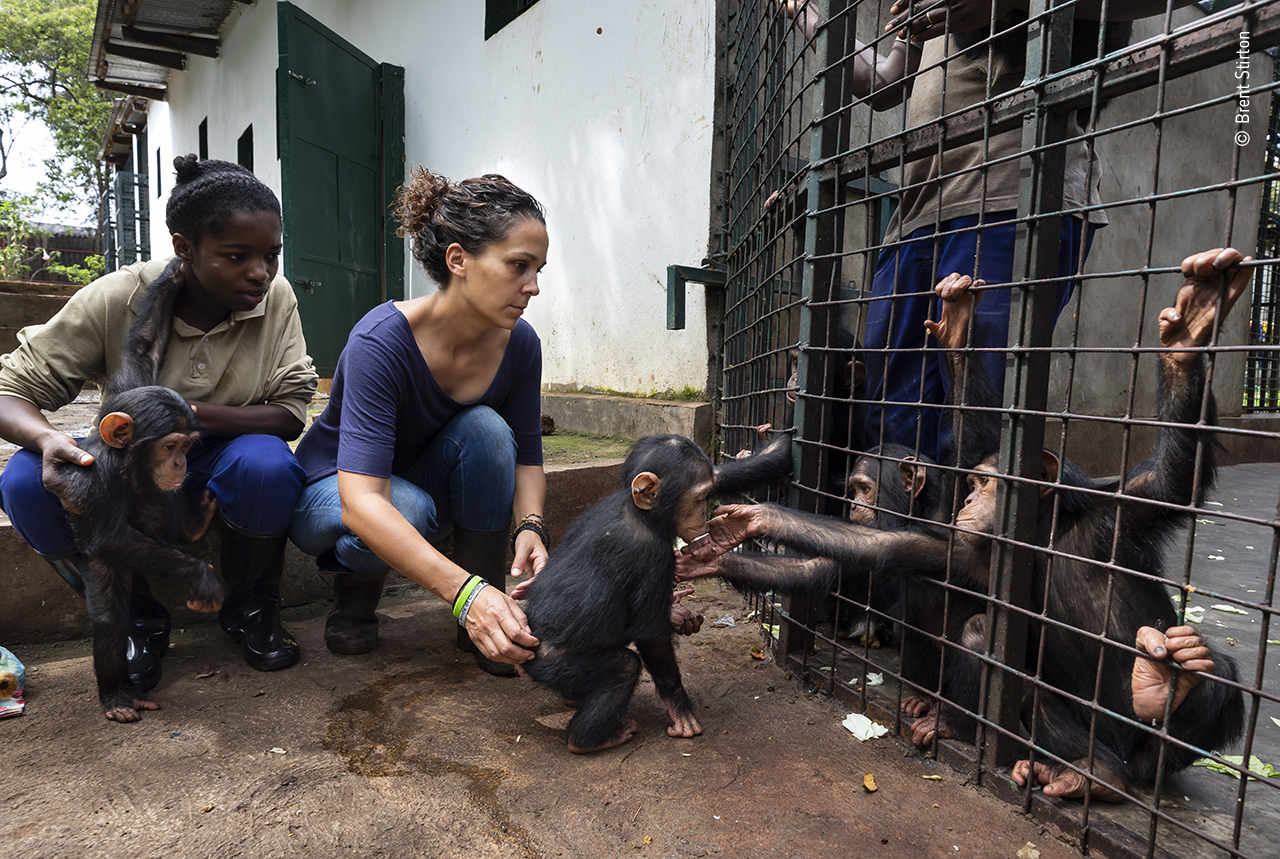
Image © Brent Stirton. Two newly rescued chimpanzees are carefully introduced into the juvenile enclosure at the centre.
The struggle to survive
The rescue centre faces many challenges; Brent describes how a lack of funding and qualified staff who are sufficiently dedicated to the job pose problems. The sanctuary is also in an area of serious instability where armed militia groups are a constant threat.
Juvenile chimp keeper Sawari has been kidnapped and raped three times by different groups including a Rwandan militia group, a Mai Mai group and again while treating child soldiers. She sleeps with the chimps in the dormitory at night and stresses that while she is helping the chimpanzees, they in return are helping her to heal.
Vet Lina was wounded in a grenade attack by rebels and believes her survivor status has made her closer to the chimpanzees she cares for.
Brent had to overcome his own challenges to capture these photos. Not only is it expensive to get to the sanctuary due to the remote location but more importantly he stresses how, 'these animals are traumatized so you have to ensure you don't add to that when you work with them.
'I needed to wait a long time to get access to a rescue, surgery, health checks etc. I needed to prove to Lwiro that my intentions were honourable and that I was not going to make images that reinforced the idea of baby chimps as pets. That is one of the main reasons for this problem existing.'
Instead Brent's images present the chimps as they are, young orphans that have been robbed of their natural way of life. His photos show the immense difficulties the sanctuary is facing to save lives and rebuild chimpanzee communities.
Sanctuary director Itsaso Vélez del Burgo Guinea, dreams that in the future her 'work will no longer be necessary, meaning the chimpanzees and other wildlife will be well protected in their habitats. For our chimps my dream will be to find a suitable release site, where we can release them back to the wild. Of course there are chimps that will never go back to the wild because their psychological trauma is irreparable. But we will take care of them for the rest of their lives.'
She implores us to understand that 'this is not only an "African" issue, this is global. With our daily actions we can make a huge difference, as consumers we have the power to change the future of our planet.
Of course the first action would be to never buy a wild animal and to create awareness around us for people thinking of buying a monkey, a parrot or even a lizard. These animals suffer incredibly from the capture, the transport and finally living away from their family and habitat in a human house. But everyday in our decisions in the supermarket or in any other purchase we can make a change.'
How you can help
Brent says, 'It's important to do hopeful stories because people need to feel like they can support something that is winnable.'
How can the public help the chimps? The sanctuary's biggest challenge is finding funds, which go towards the cost of formula milk for baby chimpanzees and food for older chimps, all purchased from the local community.
Donations also help to pay salaries for the keepers. Unemployment is a big problem in the Democratic Republic of Congo and the rescue provides jobs for 55 Congolese people. Brent urges that you support Lwiro if you can. You can find out more about their work at their website: https://www.lwiroprimates.org/.opens in a new window
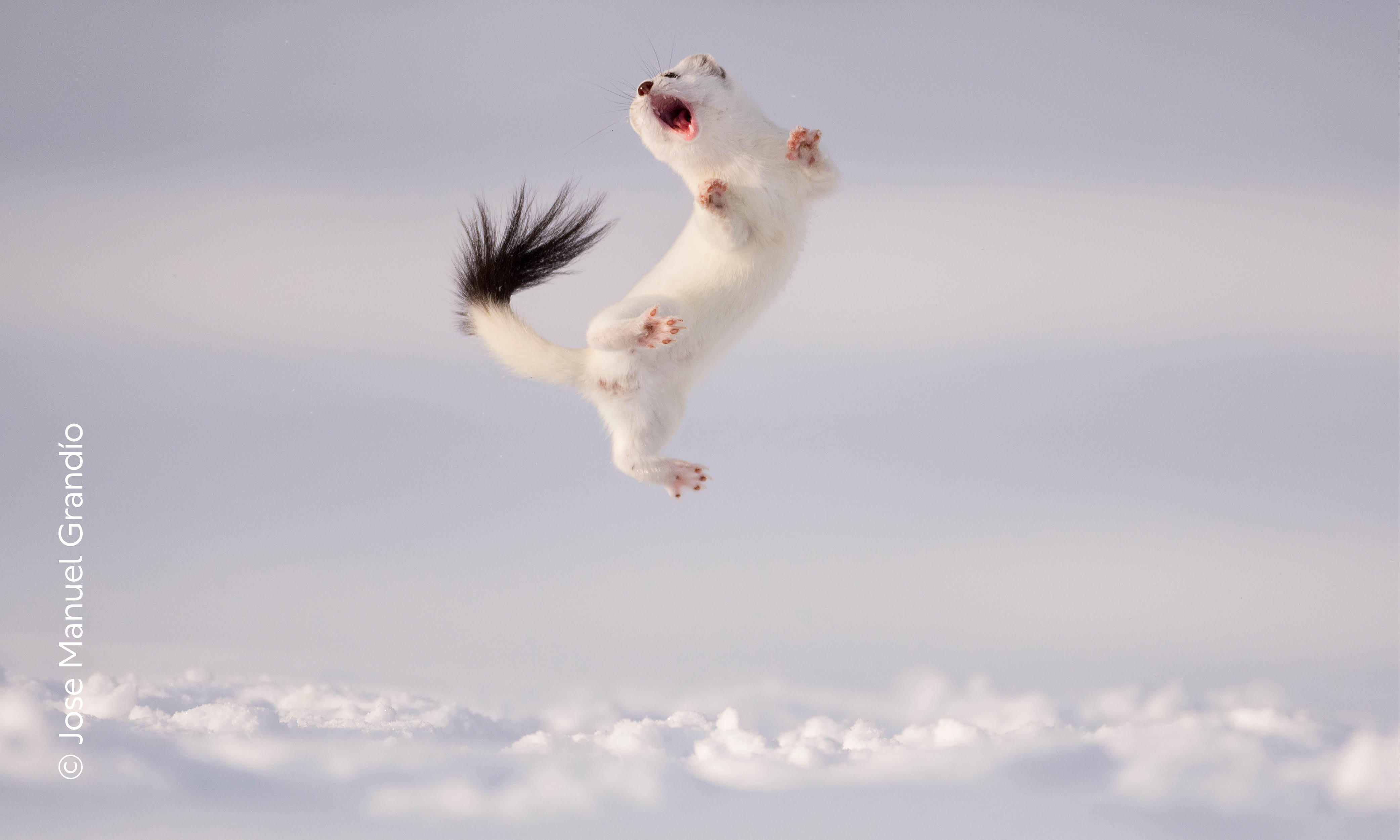
Explore the gallery
Wildlife Photographer of the Year tells the incredible stories of life on our planet through powerful photography and expert insight.
Don't miss a thing
Receive email updates about our news, science, exhibitions, events, products, services and fundraising activities. We may occasionally include third-party content from our corporate partners and other museums. We will not share your personal details with these third parties. You must be over the age of 13. Privacy notice.
Follow us on social media